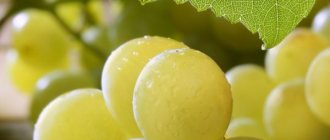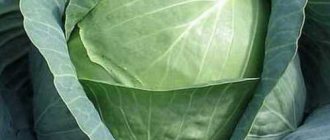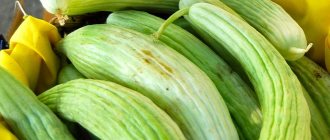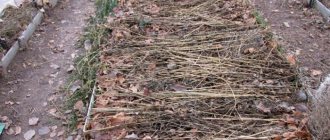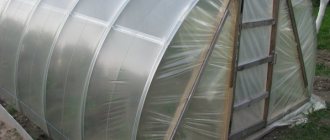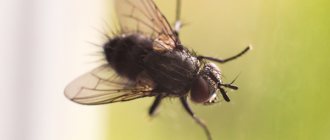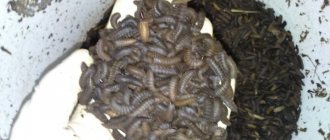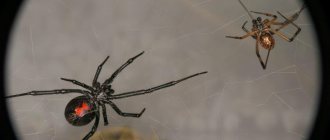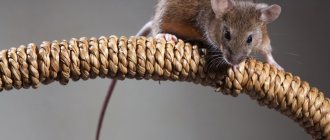Long brushes with a rain of shiny, fragrant berries, black pearls, against the backdrop of thick, bright, green foliage... Every gardener's dream has come true in the Titania currant variety. Productive, frost-resistant, with high resistance to diseases, this dessert blackcurrant has been pleasing residents of cold regions with its vitamin-rich fruits for almost half a century. The variety was bred in Sweden in 1970 based on the Altai dessert and local KajaaninMusta-Tamas currants. In our country, black currant Titania began to spread in the 90s.
Description of the blackcurrant variety Titania
Titania is a currant that can be found in Siberia, the Urals and the Far East. Optimal weather conditions for growing the variety are the Central and Middle zones. The currants have time to fully ripen and accumulate a sufficient amount of useful elements and sugars. In the northern regions, the berries correspond in taste to the varietal characteristics, but may be smaller in weight. In the South, Titania is not popular because it does not grow in the shade, and the berries can be baked in an open area.
Currants are a perennial crop; they bloom in the second year of the growing season, and full fruiting occurs in the fourth season. Titania grows in the form of a compact bush. The variety is medium-sized, height 1.3 m, the crown is rounded, spreading, reaching 1.2 m in diameter. Titania is characterized by intensive shoot formation and dense foliage.
Description of the bush and berries:
- Perennial stems are erect, of even length, the surface is smooth, dark brown.
- Numerous young shoots of currants are bright green with a purple tint.
- The foliage of the Titania variety is dense. The leaf blades are three-lobed, single, arranged oppositely. The leaves are large, bright green, corrugated, with carved edges and fine pubescence at the bottom.
- The flowers are small, yellowish-green, simple, arranged in groups of 16–20 on long peduncles. The variety is self-pollinating, each flower produces an ovary. The self-fertility of currants is a guarantee of stable yield of the variety.
- Fruit clusters are straight, formed from leaf axils.
- The root system of currants is mixed. The central part is deepened by 60 cm, the fibrous roots have grown, forming a near-trunk circle in accordance with the volume of the crown.
- The fruits are round, slightly flattened at the base, the weight on one cluster is not the same: the largest weigh up to 5 g, on average - 2.5–3 g.
- The peel is thin, elastic and not prone to cracking, the surface is anthracite-colored with a matte sheen.
- The pulp is juicy, brown, dense, with numerous small black seeds.
Important!
The taste of the fruits of the Titania variety is balanced. The berries are sweet and slightly sour. Currant Titania received a rating of 4.7 on a five-point tasting scale
Characteristics
Titania is one of the common varieties suitable for industrial cultivation. Currants can be cultivated on large farm plots. The berry detachment is dry, the size is standard for mechanized harvesting. The immune system is strong, currants do not require regular processing.
Drought resistance, frost resistance
Titania is a drought-resistant plant. Seasonal rainfall is sufficient for currants. In shade and partial shade it develops more slowly than in open areas. Due to lack of moisture, the berries do not crumble or lose their shape, but under the scorching sun of the subtropics, burns are possible.
The Titania variety was created for cultivation in cold climates. Currants have a high level of frost resistance. It is not afraid of temperatures dropping to -340 C. An adult plant overwinters without shelter. If the shoots freeze, currants quickly form a replacement. Seedlings are less resistant to frost. If the temperature drops below -25 0C, it is recommended to insulate the bush along with the crown.
Productivity
The variety is characterized by stable fruiting. As the berries ripen, they do not become smaller and do not lose their taste. They are well attached to the stalk and do not fall off. In temperate climates they do not bake in the sun. The variety is mid-season. Currants ripen in mid-July. Titania is one of the ten most productive varieties. From a five-year-old bush, 4–6 kg of berries are harvested. On farmers' fields, 80 centners are taken from 1 hectare. Thanks to the dense peel, the berries are not prone to mechanical damage. The currant harvest can be transported over long distances.
Application area
Titania is a dessert variety with a rich chemical composition, so the berries are often consumed fresh. The harvested crop does not lose nutritional value for about 2.5 weeks (when stored in the refrigerator). Berries are transported in refrigerators at a temperature not exceeding +6 0C.
To preserve the vitamin composition, currants are frozen or dried. After heat treatment, the fruits lose some of the beneficial elements. For winter preparation, grind the berries with sugar and store them in the refrigerator. You can make compote, jam, marmalade or preserves from blackcurrants.
Reviews from summer residents
Chokeberry "Titania" receives consistently positive reviews from gardeners. The first harvest of fully ripe berries can be harvested in the first ten days of July. Blackcurrant of the foreign selection "Titania" has green pulp with a dessert, slightly winey taste. The average sugar content in the pulp is relatively high and amounts to 6.6%, and the acidity of the berry pulp does not exceed 3.2%. The variety is perfectly suited for machine assembly and transportation of crops over long distances. That is why it is often cultivated by farms and on an industrial scale.
Advantages and disadvantages
Titania is a medium-sized bush, but quite dense. This is a variety of black currant in which up to five full-fledged fruit clusters can develop from one vegetative bud.
Titania currant berries are included in assorted fruits
pros
- high nutritional value;
- fruits are not prone to cracking and shedding:
- stable harvest;
- long shelf life;
- disease resistance;
- transportability;
- drought resistance;
- versatility in use;
- frost resistance;
- good taste.
Minuses
- does not tolerate excessive soil moisture;
- needs feeding;
- berries have different weights;
- when grown in the shade, the fruits are small and sour;
- intensive shoot formation leads to the need for correction of bush density.
Features of care
Surprising is the very high resistance that the Titania currant variety has.
A description of all the advantages of this variety shows people why they need to plant this particular variety. The plant is able to grow even in the northernmost regions of the country, as it tolerates frost easily. After winter temperatures of about 30 degrees below zero, the bush continues to grow and develop as before. You do not need to provide any special care for currants to delight you with their fruits every year. In the spring, you need to prune the branches, which helps monitor the formation of the crown of the bush and increases the amount of harvest. You also need to feed the bush with various mineral and organic fertilizers. During prolonged dry weather, water the bush, although currants can easily tolerate a long absence of water. The shrub is able to grow in the same place for fifteen years. To do this, you just need to regularly remove old branches and periodically dig in shoots to increase the number of plants.
Reproduction methods
The Titania variety is propagated in the following ways:
- By layering. In spring, the lower branch is fixed to the soil and covered with soil. The next season, at the end of summer, areas with rooted buds will be visible; they are cut and planted.
- By cuttings. The method is the most common and effective. The material is taken from annual shoots. In the spring, cuttings 12 cm long are prepared. They are placed in a container with a nutrient substrate and brought indoors for the winter. At the end of summer next year, currants are planted on the site.
- Dividing the bush. For this purpose, use a bush no younger than five years old. It is dug up and divided into parts so that each has 2-3 branches and a healthy root system.
Attention! Dividing the parent plant is technically possible, but the survival rate of adult Titania currants is low.
History of selection
The variety comes from the result of crossing the Russian species Altai dessert and the well-known Swedish currant Kajaanin Musta-Tamas. The first seedlings of Titania have been in the descriptions of Russian summer residents since the late 90s. Since then, the plant has received good reviews and is grown not only in areas with difficult climates, but throughout the country.
Landing
Currants are planted on the site in spring or autumn. Titania is a frost-resistant crop, so work at the end of the season is more preferable for it. The plant will have time to take root and will immediately begin to grow in the spring. The time is determined taking into account the climatic characteristics of the region. There should be 35–40 days left until frost. In the Middle and Central zones, the crop is planted approximately in the second half of September. In spring, currants are rooted on the site after the earth has warmed up to +10–12 0C.
An open area, protected from the north wind, is allocated for the variety. Placement in partial shade is allowed. The soil should be light, nutritious, with good air circulation. The soil composition for Titania is preferably slightly acidic or neutral.
For planting, select a seedling from a nursery that is at least three years old and has a closed root. No preliminary preparation is required for currants. If the material is grown independently, the root is treated with an antifungal agent and placed in a growth stimulator for 2–3 hours.
Planting currants:
- Prepare a mixture of compost, soil and sand with the addition of superphosphate.
- The hole is dug in accordance with the size of the root, approximate dimensions are 50x50 cm.
- The bottom is covered with a drainage pad and part of the substrate.
- The currants are placed in the center and covered with soil.
- The root collar is deepened by 5–6 cm.
- The shoots are cut to four buds.
- The seedling is watered and mulched.
Aftercare
Agricultural technology for black currants is standard and consists of the following activities:
- Titania is watered only during abnormal drought during flowering, fruit ripening and in the fall (before frost). Use a large volume of water.
- Fertilizing begins in the second year. In the spring, urea or any nitrogen-containing product is added. When the berries begin to ripen, superphosphate and potassium are added. In the fall they feed with organic matter.
- If the soil around the bush is covered with mulch, then the currants are not loosened, but only the weeds are removed by the roots.
- Pruning is carried out in autumn and early spring. Remove damaged and dry areas. Anti-aging pruning is carried out every 5 years. In this case, the old branches are cut off and the young ones are left.
- The outer branches, under the weight of the berries, can sink to the surface of the soil, so it is recommended to fix the currants to a support.
- For the winter, mature bushes are mulched. If frosts below -35 0C are predicted, then the branches are pulled together, fixed and covered with insulation.
- Fruit and berry bushes are often damaged by rodents. A product that is toxic to them is laid out near the bush.
Regularity of watering
The plant needs moisture, but overwatering is unacceptable. It is important to perform 3 waterings per season:
- during the formation of berries;
- after harvest;
- before frost.
Watering currants. The illustration for the article is used under the standard license ©ofazende.com
Pests and diseases
Titania is characterized by strong immunity. If the rules of planting and agricultural technology are followed, it practically does not get sick.
With high soil and air humidity, bushes may be affected by anthracnose
Yellow spots are a sign of the disease. The damaged areas then dry out and holes form. The infection is eliminated by treating the currants with Bordeaux mixture.
Pests on the Titania variety are parasitized by aphids and moths; insects are destroyed by Actellik.
